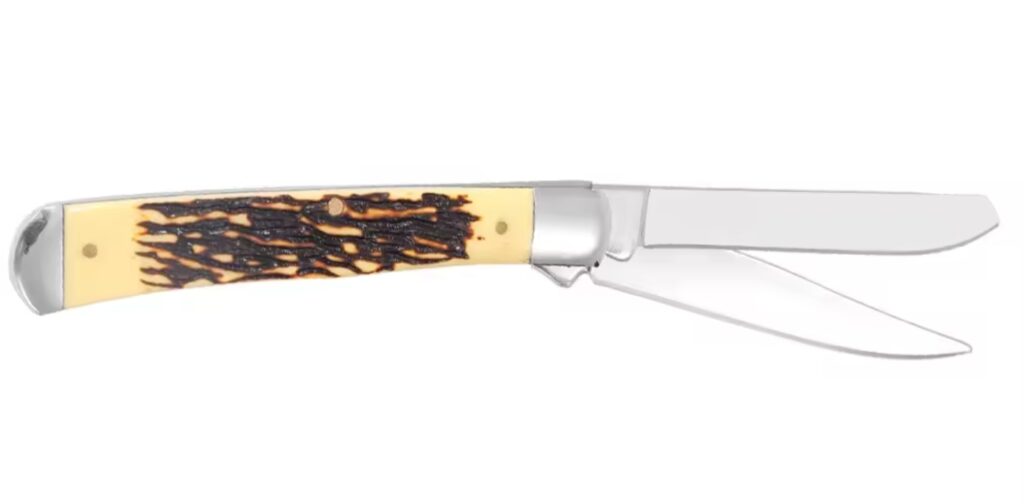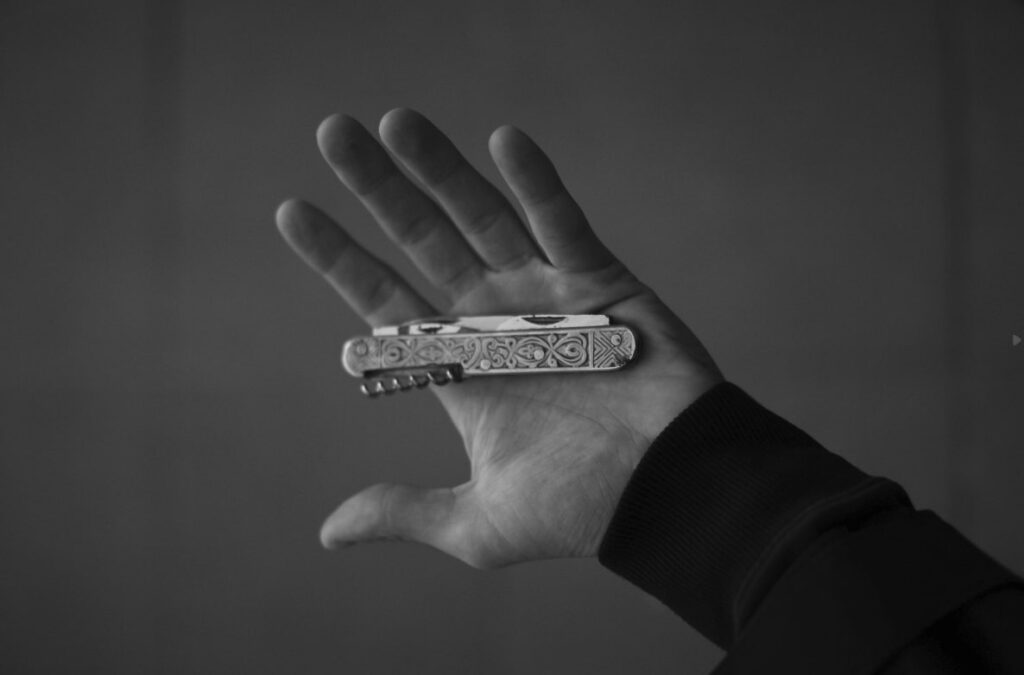A spey blade is a particular type of knife blade. It is initially designed for the agricultural practice of neutering or spaying livestock. The spey blade features a straight and narrow edge. It remains parallel to the spine until it meets a short, rounded belly and abruptly clipped point. The spey blade’s shape is often found in multi-blade pocket knives. It is well-suited for tasks that require precision and control without the risk of accidental piercing.
The design of the spey blade ensures that you can perform slicing actions effectively. While it’s not as commonly used for its original veterinary purpose today, the design has been adapted for everyday use. The versatility of a spey blade lies in its ability to handle a variety of materials safely and efficiently. Whether it’s cutting through cordage, whittling wood, or even as a utility tool for food preparation, the spey blade’s unique shape provides a level of safety and precision for both professional users and everyday carry enthusiasts.
History of spey blades
The spey blade, as the name suggests, is a type of blade shape commonly seen on small knives used by veterinarians to perform castration. Originally designed for the specific purpose of neutering animals. This blade shape reflects its utilitarian heritage, identified by a straight edge and a rounded tip. The design maximized safety and efficiency during use. The rounded, dull tip are for protection and safety reasons. Making it perfect for precise and controlled cuts. Minimizing the risk of accidental injuries to the animal or the person doing the cutting.
The curve and blunt point of the spey blade were adapted to wider categories of knives. Especially for stockman knives and trapper knives. Recently, CIVIVI’s new release of the Sendy also utilizes the spey blade design, designed by Ben Peterson. Manufacturers have adapted its design to suit modern knives. Evolving to meet the demands of today’s users without straying too far from its traditional shape. Thereby preserving its place in the rich history of knife-making.
The spey blade design

A spey blade typically features a straight edge with a narrow profile, which extends to meet a small, curved belly near the tip. This design lacks a sharp point, replaced by a rounder tip, which distinguishes it from more piercing-oriented knives. It’s this blunt tip that makes the spey blade ideal for specific tasks where precision and safety are paramount.
The blade’s straight edge maximizes the cutting surface. It allows you to easily slice through materials without the risk of accidental piercing due to the rounded tip. The slight curve of the belly towards the end of the blade provides more control. Especially for detailed tasks while maintaining the blade’s overall safety and effectiveness.
Start Working with a Professional Now
Common uses and applications
The spey blade serves multiple purposes due to its distinct design at the knife’s tip. In this section, we’ll discuss its original uses and modern applications, as well as the common knife patterns where it is most commonly seen.
Original use
- Castration: Initially designed for neutering livestock, the spey blade minimizes the risk of puncturing during this delicate procedure.
- Skinning game: Hunters often utilize the spey blade for its efficiency in skinning. Thanks to the contoured edge that helps in making clean cuts through animal hide.
- Gutting: The blade’s design is optimal for gutting without piercing internal organs. Which is crucial when processing game in the field.
EDC use
- Opening packages: The curve of the Spey blade makes it practical for safely opening packages.
- Food prep: Your Spey blade can be a practical tool in food preparation, effectively slicing through both meats and vegetables.
- General cutting tasks: The smooth edge is suitable for general cutting tasks, such as cutting twine or opening feed bags.
Trapper knife
Trapper knives typically feature two larger blades hinging from the same side. Among these blades are the clip and spey blades, both of which serve specific purposes. The spey blade, with its curved and blunt tip, is particularly adept at precise slicing and controlled cuts, making it a valuable tool for skinning tasks. Together with the clip blade, these knives offer versatility and utility for various outdoor activities and everyday tasks.
Stockman knife
The stockman knife is characterized by its practicality and versatility. When examining a stockman knife, you’ll typically find three blades arranged from left to right: a spey blade, a sheepsfoot blade, and a clip point blade. The spey blade, positioned at the far left, offers precise slicing and controlled cuts, making it ideal for various tasks encountered on the ranch or in outdoor settings. Alongside the spey blade, the sheepsfoot blade features a straight edge and a blunt, rounded tip, making it well-suited for tasks requiring a pushing or scraping motion, such as cutting rope or opening boxes. Finally, the clip point blade, situated at the far right, boasts a sharp, pointed tip and a concave edge, providing excellent cutting and piercing capabilities for intricate tasks. Together, these blades offer ranchers and outdoor enthusiasts a versatile toolset to tackle a wide range of tasks with ease and efficiency.
Start Working with a Professional Now
Spey blade combinations in multi-blade knives

The spey blade often complements other blade types in multi-blade knives. Such as traditional trapper and stockman knives, as discussed earlier. One common pairing is with a clip blade, whose fine point is ideal for detailed work. The clip point is designed to allow quicker and more precise cuts with its thin and flat blade curving up to a sharp point. While the spey blade’s characteristic blunt tip and curved edge emphasize safety and avoid accidental piercing.
Additionally, the spey blade can be found with a sheepsfoot blade, which has a straight edge and a rounded, unsharpened point. Tailored for slicing without the risk of poking. In comparison to the similarly safe profile of the spey blade, the sheepsfoot is primarily used for chopping or slicing without stabbing. Making it ideal for tasks that require smooth, controlled cuts.
Wharncliffe blades are also a typical companion. They offer a straight edge leading to a gradual curve at the point, giving you excellent control for precision tasks. Unlike the spey, the wharncliffe presents a more pronounced tip for fine work.
Trapper knives emphasize the spey blade’s utility in skinning animals by pairing it with a clip or spey for effective processing of game.
Lastly, while not as common, a tanto blade with its angular shape and strong point can be a part of multi-blade knives. Complementing the spey blade’s lack of puncturing ability with prowess in piercing tough materials.
Investing in spey blade knives
Spey blade knives are great utility tools for ranchers, farmers, or just general knife collectors and hobbyists. They make great dainty folding knives. Granted, they are not as popular as other folding pocket knives with different blade shapes. Such as drop point, clip point, wharncliffe, etc.
If you are interested in designing and manufacturing knives with different blade shapes, including the spey blade, Kegani is the place to go. We are an OEM knife manufacturer based in YangJiang, China. Our specialty is manufacturing high-end pocket knives on demand. Contact us now, fill out this form, and let’s discuss this further!

